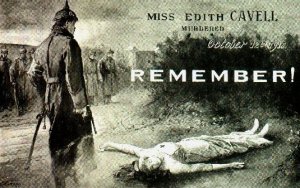This image is the best known image from a campaign that originated in 1940 with the catchphrase “Be like Dad, Keep Mum”, this image came from the campaign in 1942 and the poster “Keep Mum, She’s Not so Dumb” by the artist Gerald Lacoste is remembered more famously. It depicts a glamorous blonde woman reclining, and the officers from each branch of the Armed forces are surrounding her talking to one another as if she was not in the room. It is implied that the officers are talking military secrets, on the assumption, as wrongful as it is, that the woman is only a “dumb blonde” and will not pass these secrets onto the enemy.
One of the techniques used in this poster is beautiful people, it shows a very attractive and happy woman sitting in a room filled with powerful men and implies that she is too stupid to know what they are saying, but the poster makes it clear that this assumption is wrong. The attractive women being in the center is what draws the audience in and then unintentionally for the audience forces them to look at the whole image. Another technique used in this poster that was not yet used is labeling. This is when a euphemism is used when the propagandist attempts to increase the perceived quality, credibility, or credence of a particular ideal. A dysphemism is used when the intent of the propagandist is to discredit, diminish the perceived quality, or hurt the perceived righteousness of the mark. By creating a ‘label’ or ‘category’ of a certain group it is easier to make an example of such group because they can compliment or diminish the group legally. Meaning that the woman, who is the certain group that is labeled, is portrayed as a dumb female who can’t understand the “man talk” going on around her, the priority that she has is to look pretty and be a sex object, the label given to her.
This image is interesting because it makes these implications against women, but underlying implies that they are incorrect and it is in fact the men that are being careless, this is a technique known as unstated assumption. This technique is used when the message that the propagandist intends to transmit would seem less credible if explicitly stated. The concept is instead repeatedly assumed or implied. In other words, it is more believable that the woman is assumed to be stupid but in fact is listening and willing to share war secrets, rather then the men just being careless, that has to be an image that is assumed after looking, reading, and analyzing the propaganda.
Another technique used in this image is the usage of slogans, a slogan is known as a brief, striking phrase that may include labeling and stereotyping. Although slogans may be enlisted to support reasoned ideas, in practice they tend to act only as emotional pleas. The two slogans used in this poster are “Keep Mum, She’s Not so Dumb”, meaning a woman can be helpful in finding out important information because she is assumed to be not listening or not intelligent. Also the main slogan of this entire campaign was “Careless Talk Costs Lives”, this was used during the time that women spies were used to gain information, and government officials were caught speaking about official business when on leave. The slogan is meant to evoke an emotional feeling of guilt to military and government officials who speak freely about war secrets; because of this the deaths of soldiers and civilians was the result.





